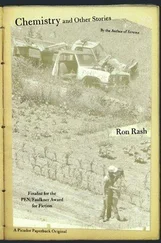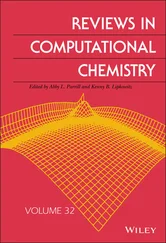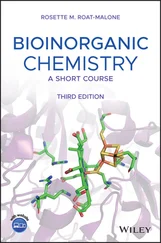4 Chapter 4Figure 4.1 Calculated junction potential for a 3 M KCl salt bridge electrolyte...FIGURE 4.2 Calibration plot for the cell potential using a fluoride ISE and st...Figure 4.3 Gran's method for a standard additions experiment. Fluoride standar...Figure 4.4 Two pathways for conversion of creatine to creatinine, the enzymati...Figure 4.5 Jaffé reaction traditionally used to determine creatinine levels in...Figure 4.6 (a) Structure of creatininium ion, (b) Structure of calix[4]pyrrole...Figure 4.7 (a) Plot of E sensorversus solution pH. The data show the sensor vo...Figure 4.8 Various types of double junction salt bridges. The additional chamb...Figure 4.9 ISE method validation. Comparison of results for creatinine levels ...Figure 4.10 Autonomous multichannel analyzer. (a) Upper diagram: flow from one...Figure 4.11 pH titration of potassium hydrogen phthalate (KHP) with NaOH. (a) ...Figure 4.12 Gran plot for the titration of acetic acid by a standardized NaOH....
5 Chapter 5Figure 5.1 (a) Three‐electrode cell for controlled potential experiments. The ...Figure 5.2 Graphical analogy between spectroscopy and voltammetry. (a) The hei...Figure 5.3 Plot of the potential energy well for the reactants and the potenti...Figure 5.4 The net current is the sum of the individual anodic and cathodic cu...Figure 5.5 (a) Commercial flow cell assembly. (b) Cross‐sectional view of flow...Figure 5.6 The current in a voltammetry experiment is dependent on, at least, ...Figure 5.7 The concentration profile for a reducible species near the electrod...Figure 5.8 (a) Rotated disk electrode assembly. (b) Cross‐section and bottom v...Figure 5.9 Hydrodynamic voltammograms for reversible, quasi‐reversible, and ir...Figure 5.10 The chronoamperometry experiment. (a) Potential step. (b) The init...Figure 5.11 The CV experiment. (a) The applied potential starts at some initia...Figure 5.12 The shape of cyclic voltammograms for reversible, quasi‐reversible...Figure 5.13 Three methods for estimating the peak current for both the anodic ...Figure 5.14 Cyclic voltammograms of aniline and related compounds at a carbon ...Figure 5.15 Double‐layer charging current response of a 3 mm diameter carbon d...Figure 5.16 Scanning the voltage in a linear manner introduces charging curren...Figure 5.17 “Pulse voltammetry” techniques for overcoming background currents....Figure 5.18 Mercury electrodes. (a) Hanging mercury drop electrode (HMDE). By ...Figure 5.19 Structures of carbon electrode materials. (a) Graphene sheet. (b) ...Figure 5.20 Carbon paste electrode. A purified graphite powder is mixed with a...Figure 5.21 The influence of the electrode surface conditions upon electron tr...Figure 5.22 Cyclic voltammograms of ascorbic acid on glassy carbon electrode i...Figure 5.23 Background scans in aqueous pH 7 phosphate buffer showing the usef...Figure 5.24 (a) Mass transport to a millimeter‐size electrode follows a path t...Figure 5.25 The development of the reactant concentration depletion zone near ...Figure 5.26 Reduction of 4.8 mM 9‐bromoanthracene at a 3 μm Au disk electrode ...Figure 5.27 Fast scan CVs were recorded for a carbon fiber placed in the brain...Figure 5.28 HPLC separation and pulse amperometric detection of a mixture of a...Figure 5.29 Diagram of an anodic stripping voltammetry experiment. The bottom ...Figure 5.30 Anodic stripping experiments performed on a solution of four metal...Figure 5.31 (a) Expanded view of a commercial glucose test strip. The blood sa...Figure 5.32 (a) KF coulometric titration cell. (b) Close‐up view of the iodine...Figure 5.33 (a) Detection electrodes in Karl Fischer cell. (b) Voltammogram of...Figure 5.34 The structure of a liquid membrane sensor for ion transfer strippi...Figure 5.35 (a) Perchlorate stripping voltammograms of 10, 7, 5, 3, 2, 1, and ...Figure 5.36 The diagram on the left shows the double polymer membrane ISE for ...Figure 5.37 (a) ITSV of potassium ions in lab water after five‐minute preconce...Figure 5.38 Multiple CV scans of 10 mM NaCl with a polyurethane membrane on th...Figure 5.39 Two ions at once. (a) Separate ionophores for Li +and K +w...
6 Chapter 6Figure 6.1 Cyclic voltammograms of [Ru(EDTA)(H 2O)] −and [Ru(EDTA)(DMSO)]Figure 6.2 Equilibria relating the different forms of some ruthenium–EDTA comp...Figure 6.3 The reduction of A Oxby reagent, B Red, as mediated by a catalyst, C...Figure 6.4 General structures for a series of Mn(II) complexes that were studi...Figure 6.5 A plot of the formal potential for complexes versus Hammet constant...Figure 6.6 Cyclic voltammogram of 2 mM uric acid in pH 7.5 phosphate buffer re...Figure 6.7 (a) Simulated cyclic voltammograms of an electron transfer step fol...Figure 6.8 Example calculation for the rate constant for the following chemica...Figure 6.9 Double potential step chronoamperometry. (a) The general current re...Figure 6.10 Spectroelectochemistry apparatus for observing UV spectra of elect...Figure 6.11 UV spectra recorded during oxidation of uric acid at an optically ...Figure 6.12 Proposed mechanism for the reduction process associated with peak ...Figure 6.13 Proposed mechanism for the formation of allantoin from the interme...Figure 6.14 Redox catalysis with a freely diffusing catalyst is a variant of a...Figure 6.15 Theoretical cyclic voltammograms for the redox catalysis of carbon...Figure 6.16 Zone diagram depicting the shape of cyclic voltammograms for the c...Figure 6.17 (a) Simulated curves at different scan rates (increasing from bott...Figure 6.18 Structure of the iron–porphyrin complex used in this case study. I...Figure 6.19 Cyclic voltammograms recorded in the presence of 2 M water in DMF ...
7 Chapter 7Figure 7.1 Simple circuit for demonstrating Kirchhoff's and Ohm's laws and The...Figure 7.2 The equivalent circuit for Figure 7.1 where R* represents the equiv...Figure 7.3 (a) A voltage divider made from two resistors provides a voltage at...Figure 7.4 (a) Sketch of 8‐pin dual in‐line op amp package, (b) sketch of op a...Figure 7.5 Schematic representation of an op amp for circuit diagrams. Positiv...Figure 7.6 The voltage follower. The signal, V in, is applied to the noninverti...Figure 7.7 Current follower op amp configuration. The signal current cannot en...Figure 7.8 A simple gain amplifier multiplies the input voltage, V in, by a gai...Figure 7.9 An op amp circuit for applying a potential in a three‐electrode vol...Figure 7.10 Faraday cage for ultramicroelectrode voltammetry experiments. The ...Figure 7.11 (a) BNC connector for mounting on an instrument frame. (b) BNC con...Figure 7.12 Some working electrode fabrication techniques. Soft glass can make...Figure 7.13 Arrangement for coating a silver wire with silver chloride [7].Figure 7.14 Assembled reference electrode made in the lab.
1 Cover
2 Table of Contents
3 Begin Reading
1 iv
2 ix
3 x
4 1
5 2
6 3
7 4
8 5
9 6
10 7
11 8
12 9
13 10
14 11
15 12
16 13
17 14
18 15
19 16
20 17
21 18
22 19
23 20
24 21
25 22
26 23
27 24
28 25
29 26
30 27
31 28
32 29
33 30
34 31
35 32
36 33
37 34
38 35
39 36
40 37
41 38
42 39
43 40
44 41
45 42
46 43
47 44
48 45
49 46
50 47
51 48
52 49
53 50
54 51
55 52
56 53
57 54
58 55
59 56
60 57
61 58
62 59
63 60
64 61
65 62
66 63
67 64
68 65
69 66
70 67
71 69
72 70
73 71
74 72
75 73
76 74
77 75
78 76
79 77
80 78
81 79
Читать дальше












